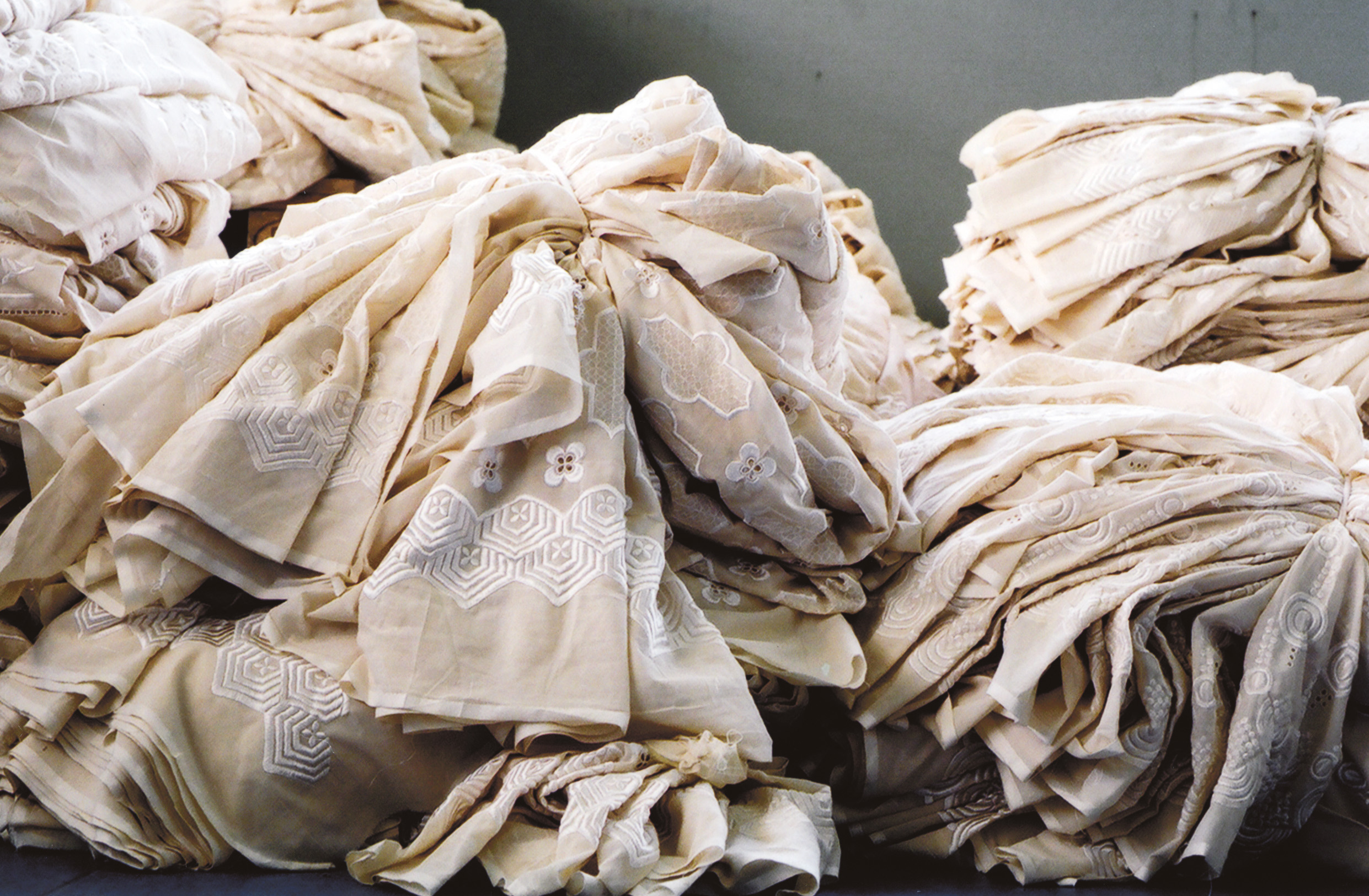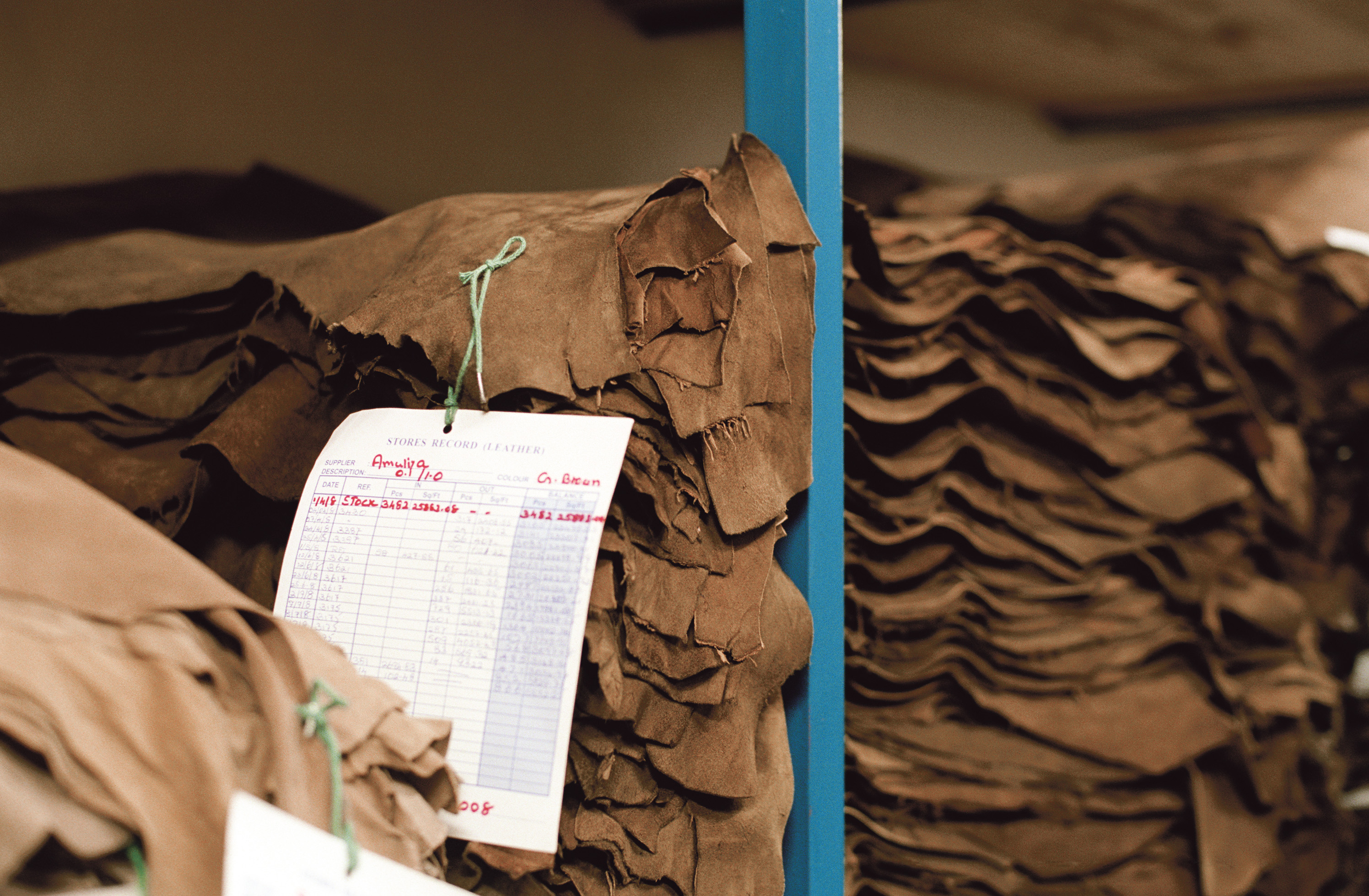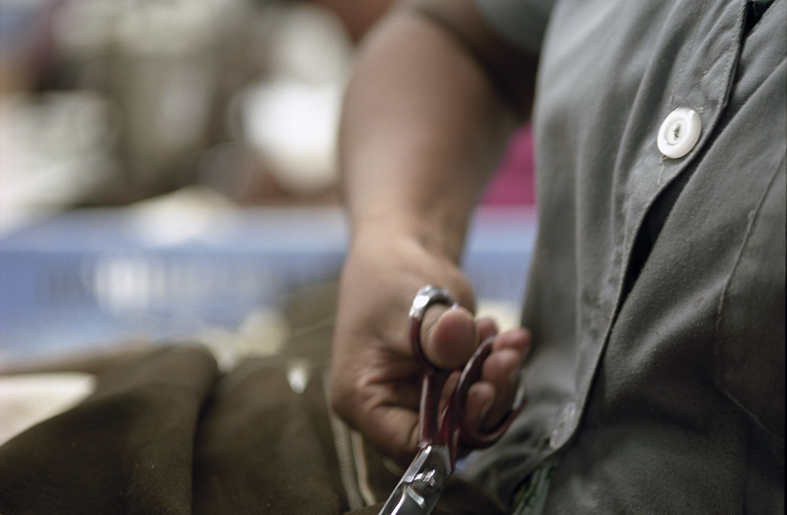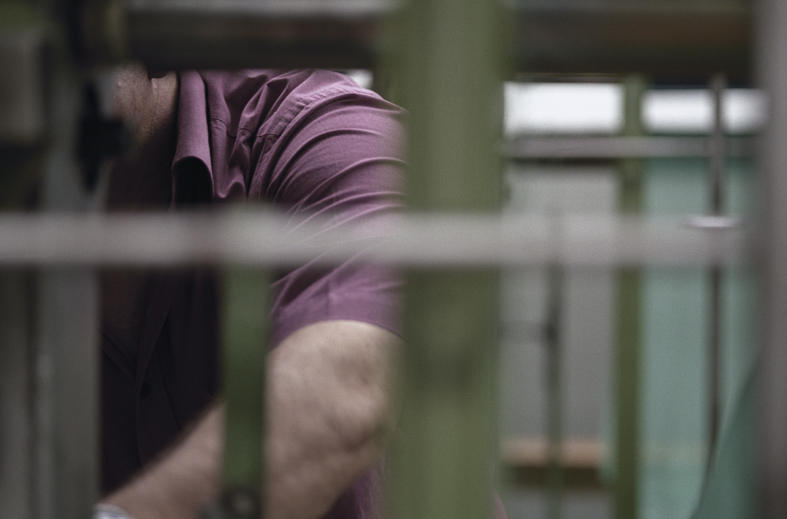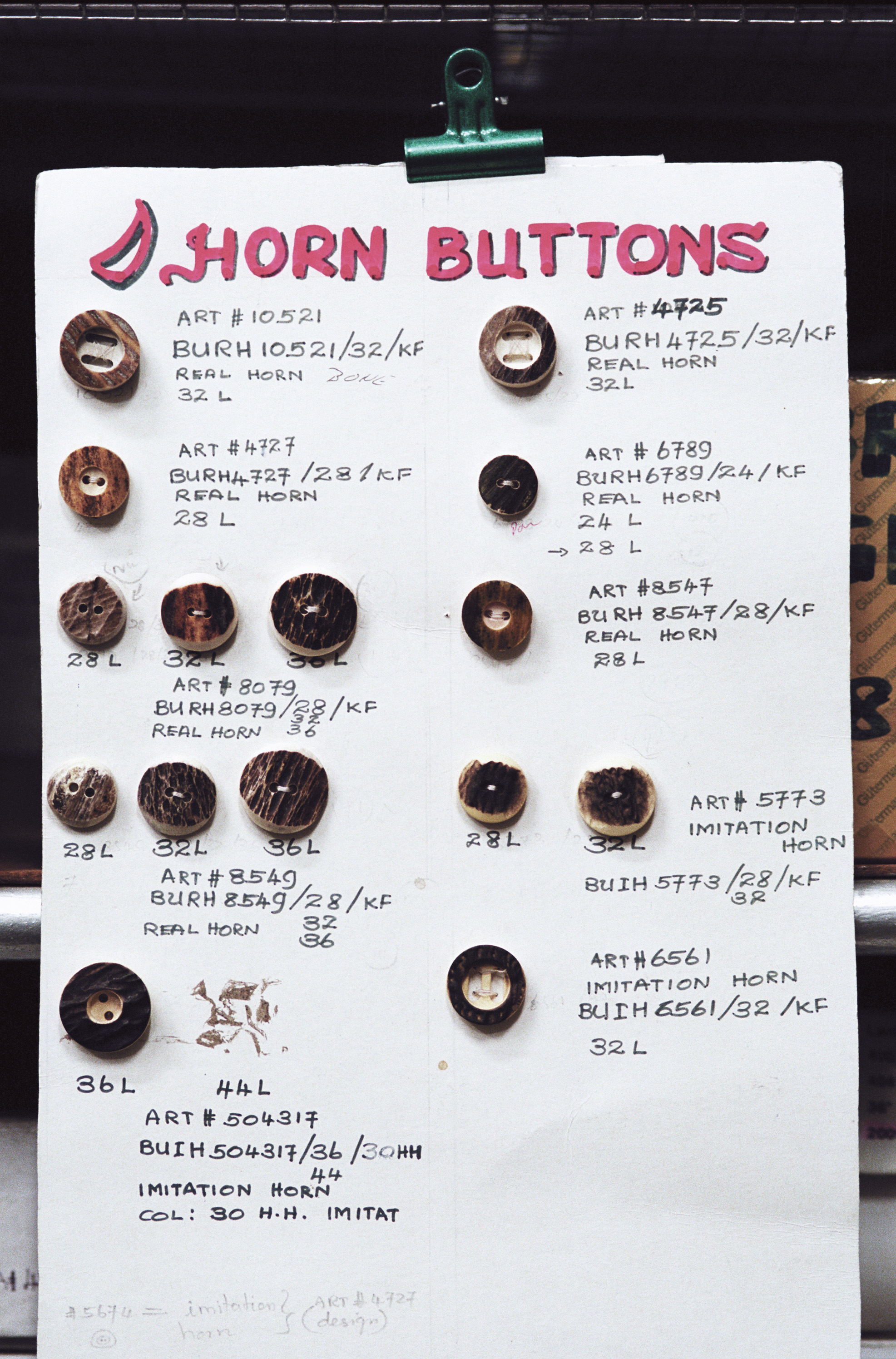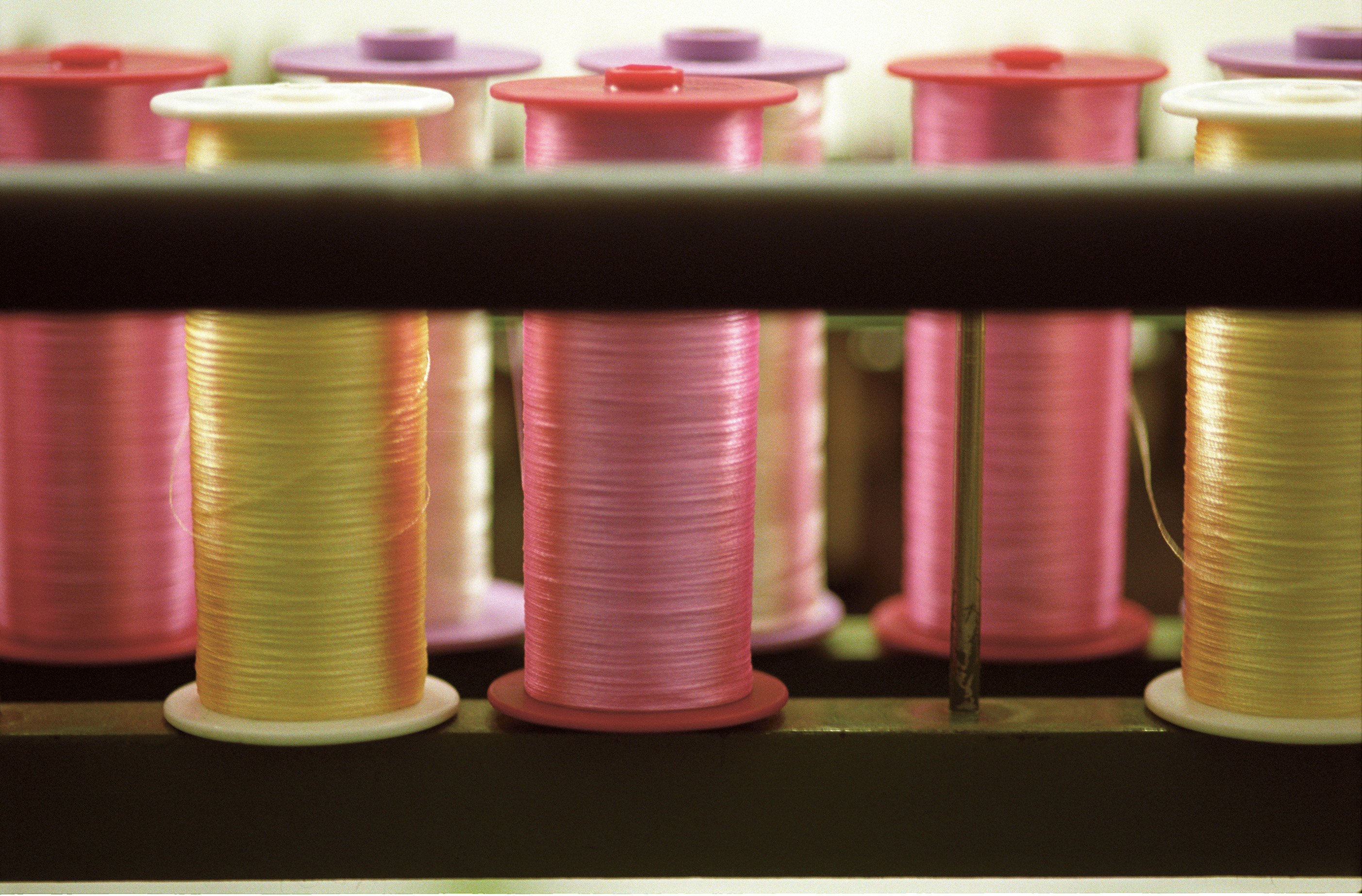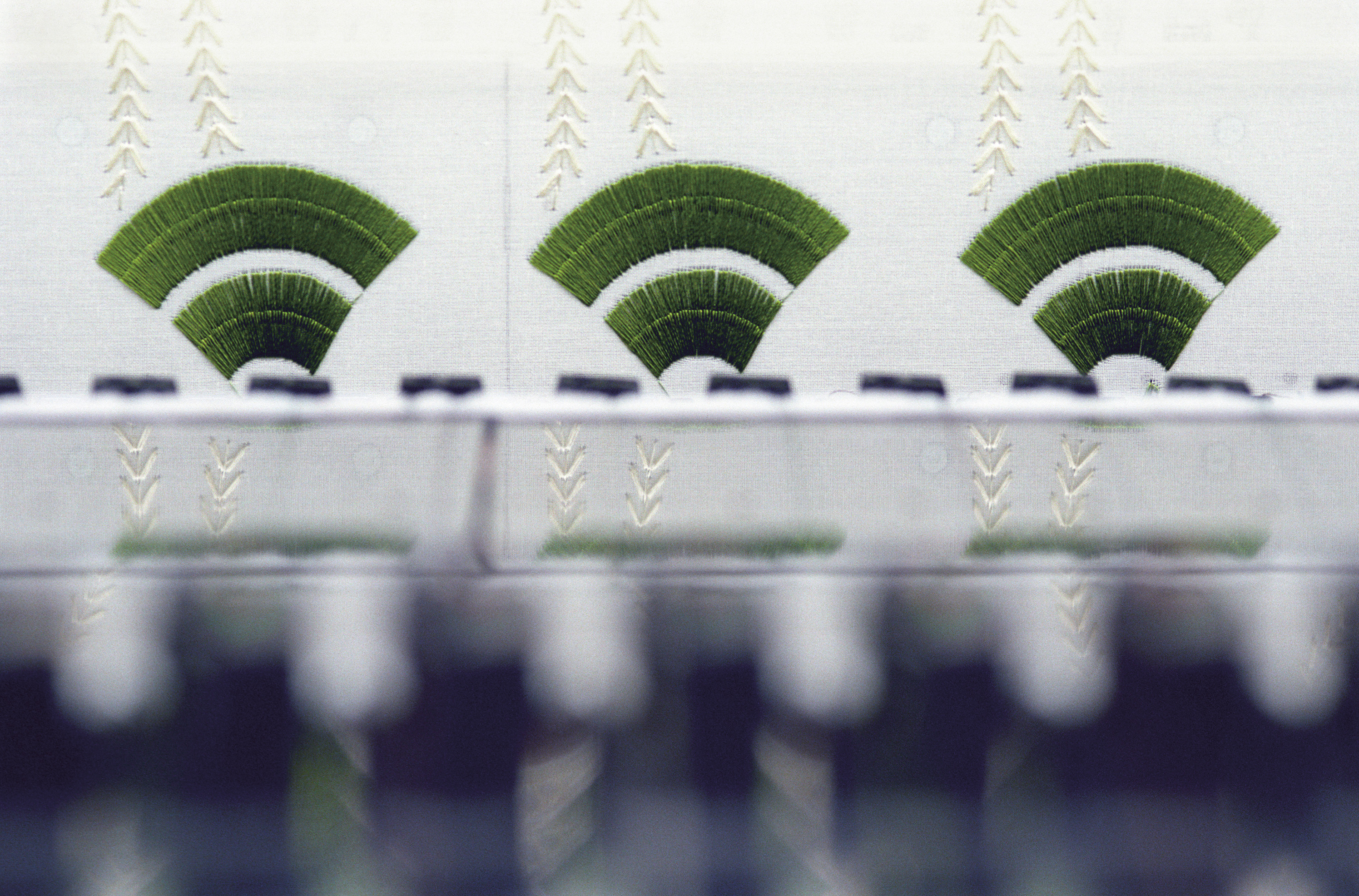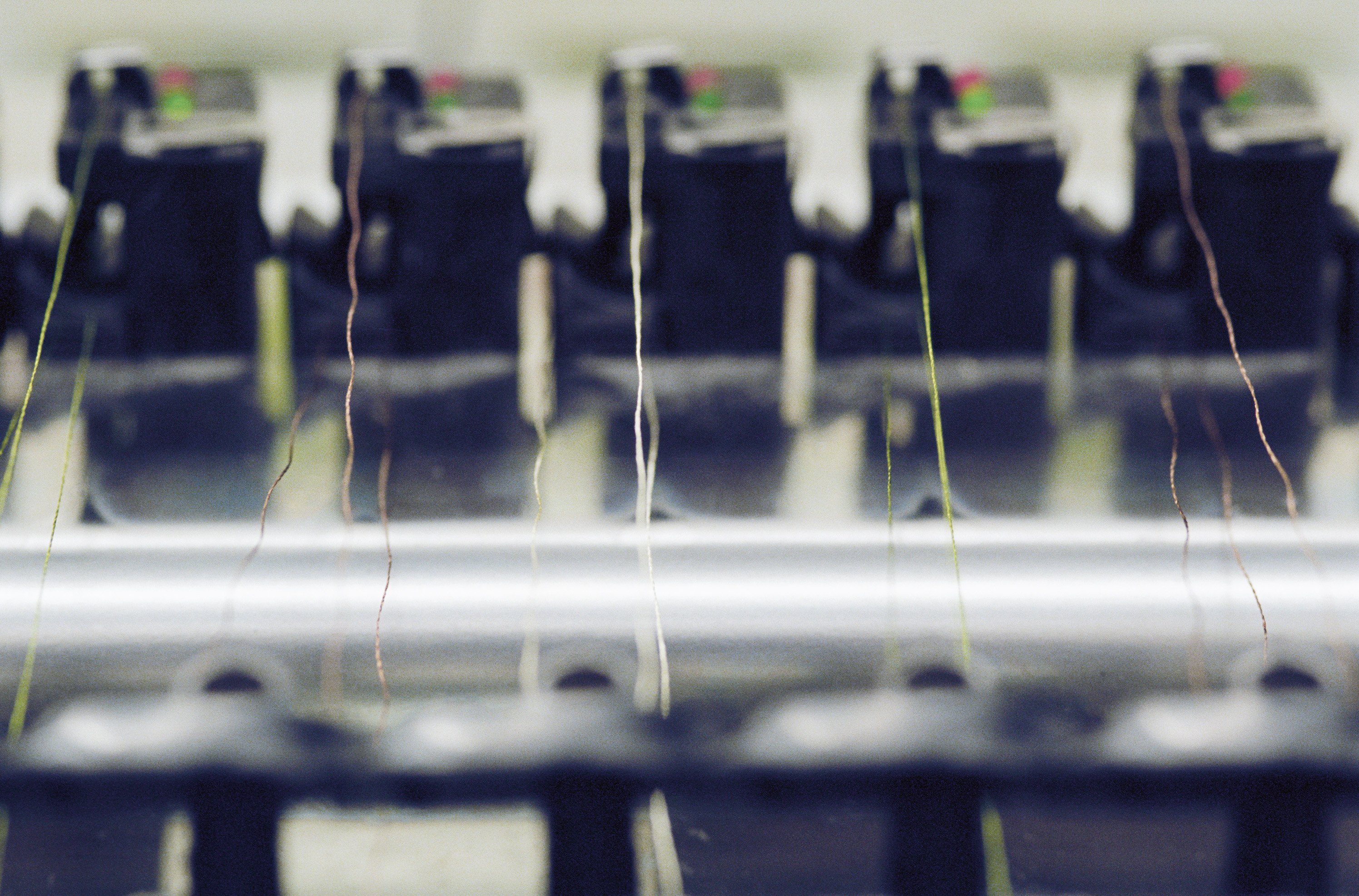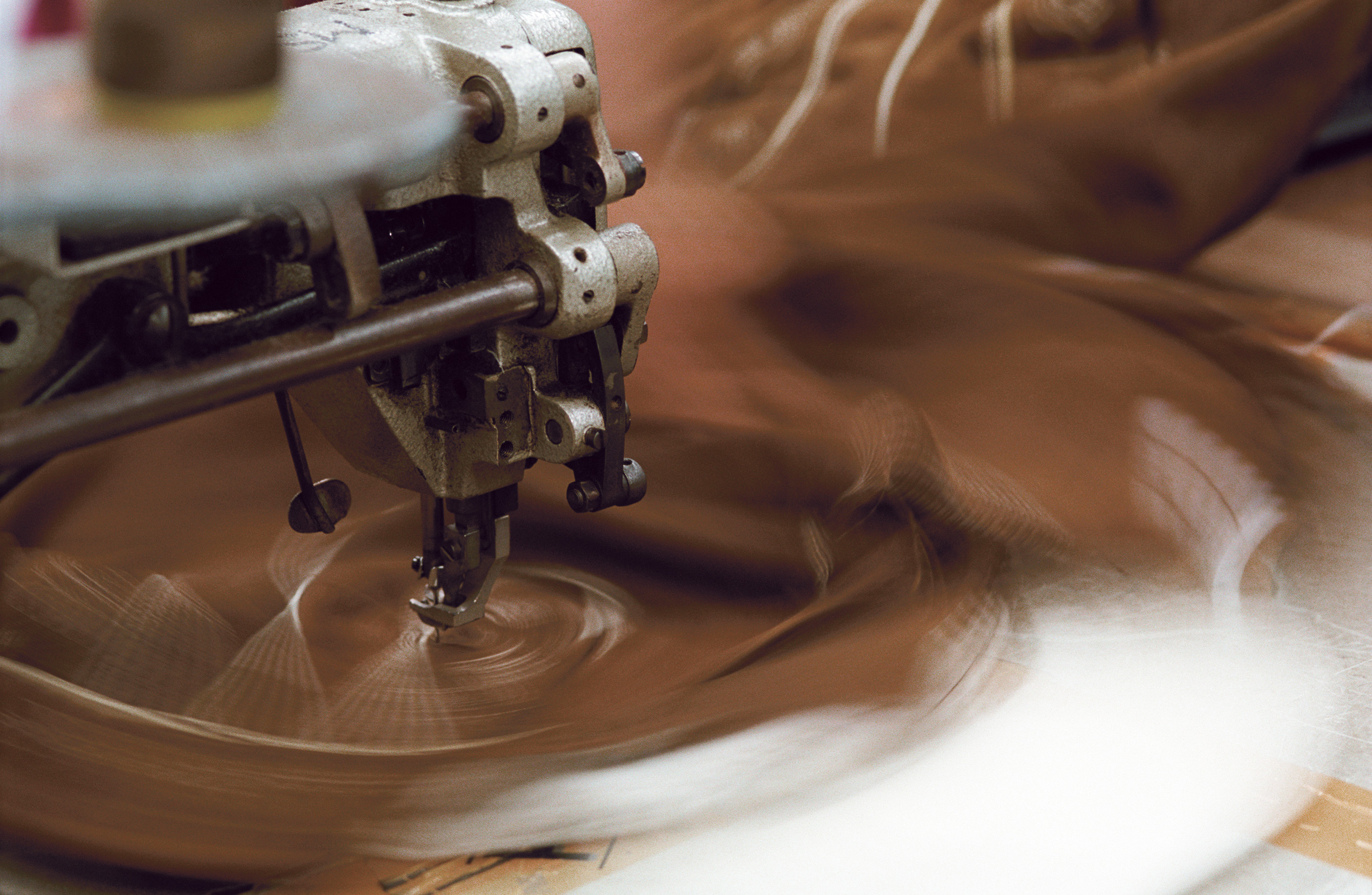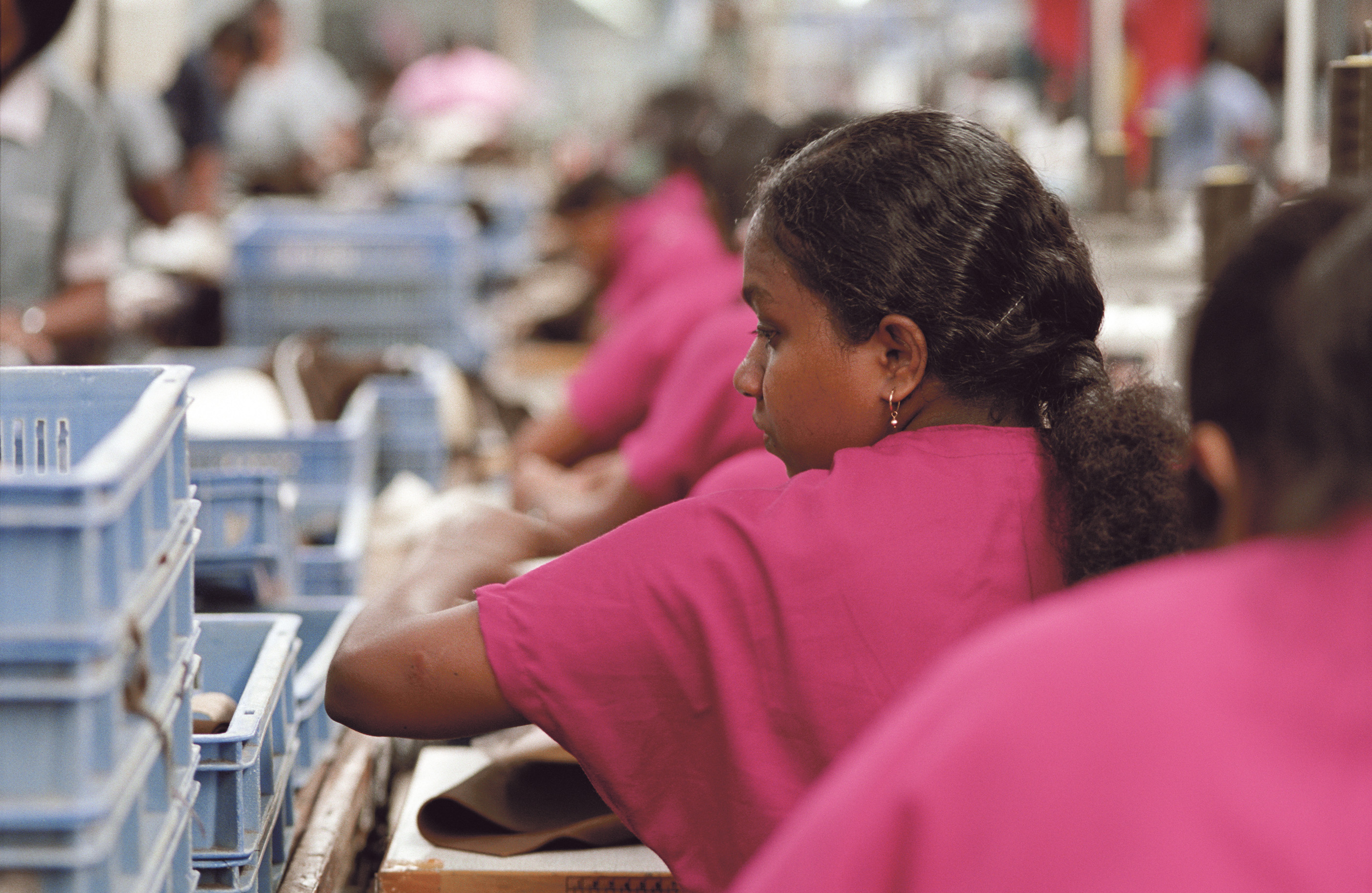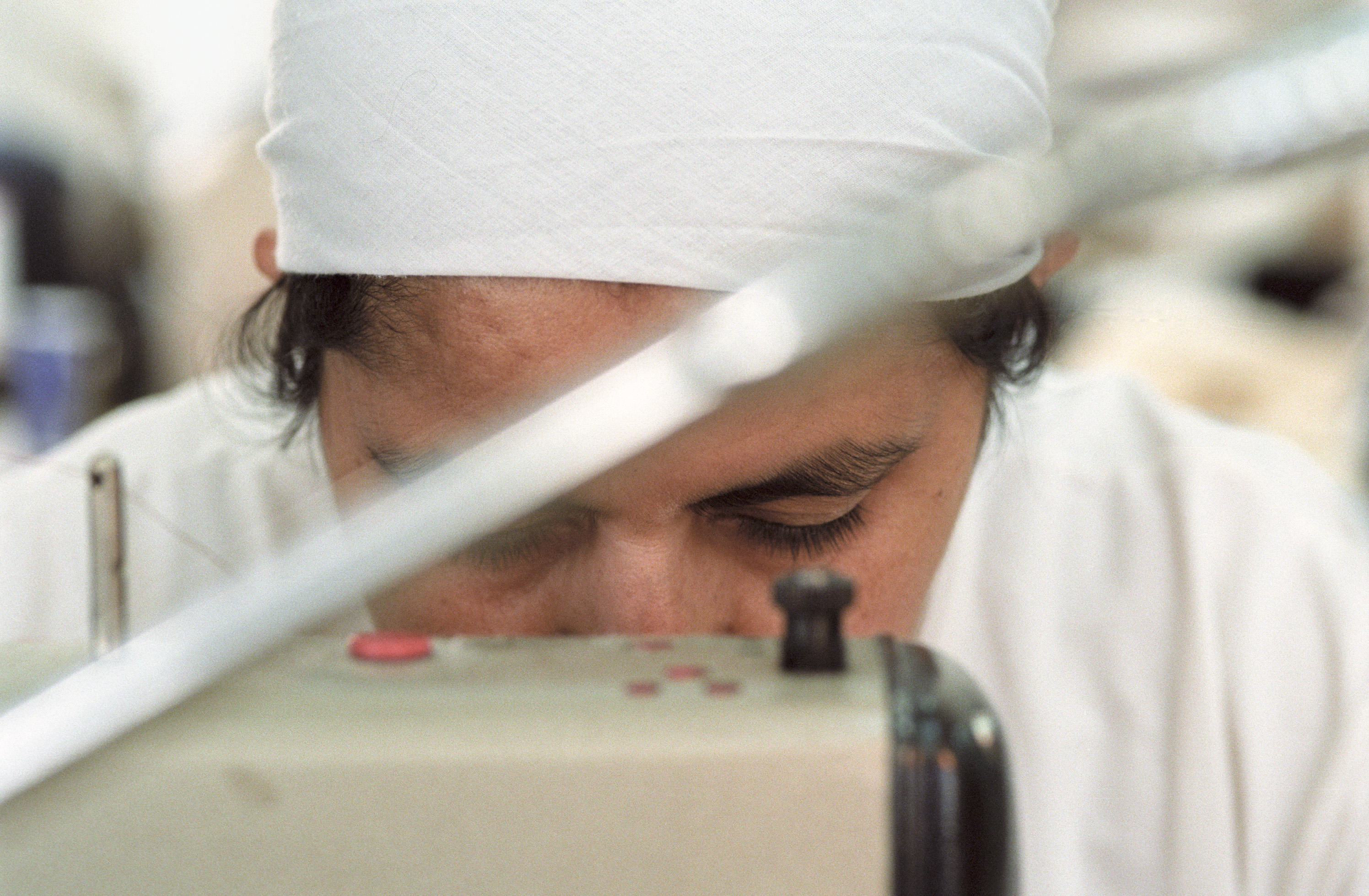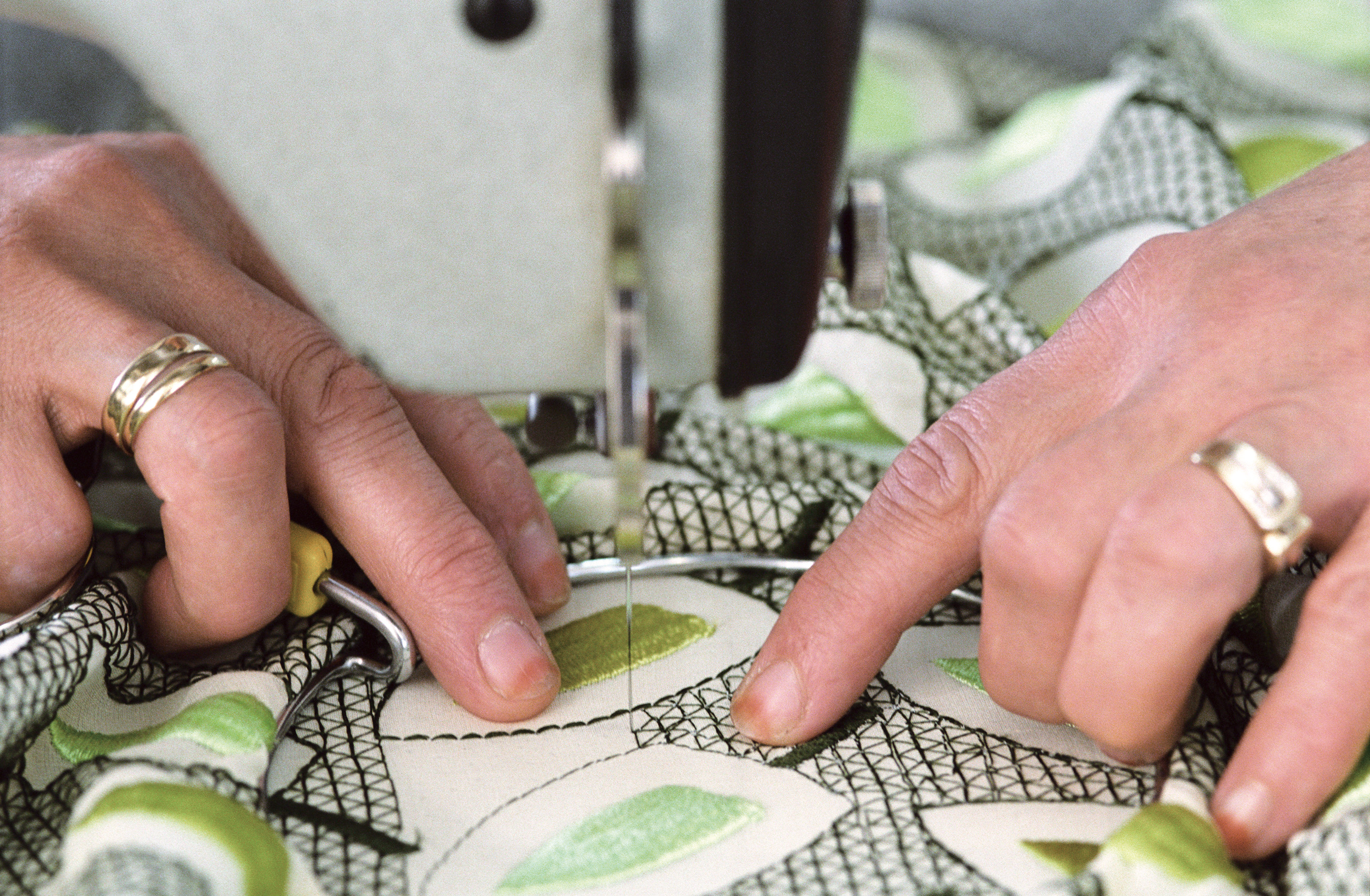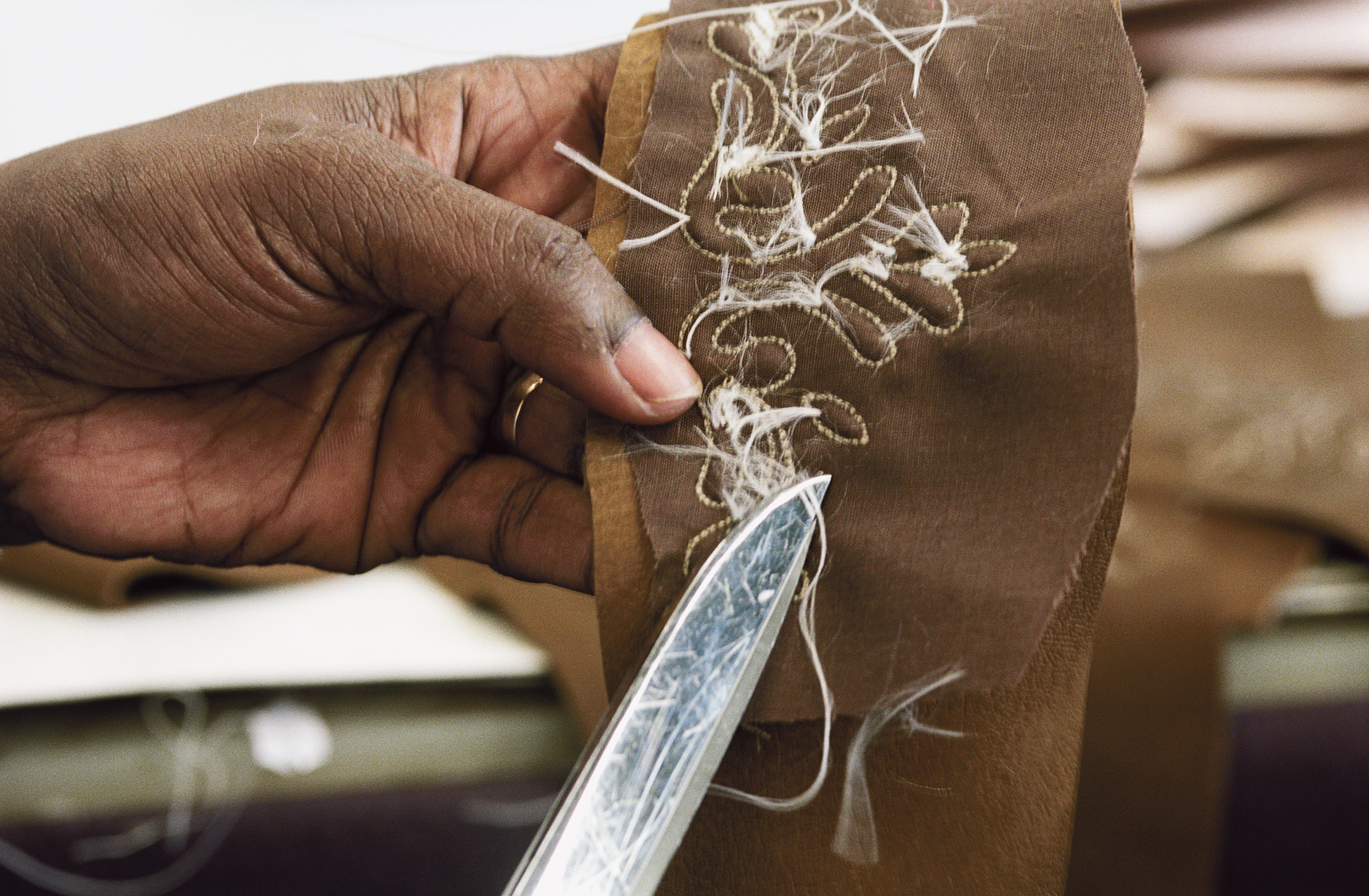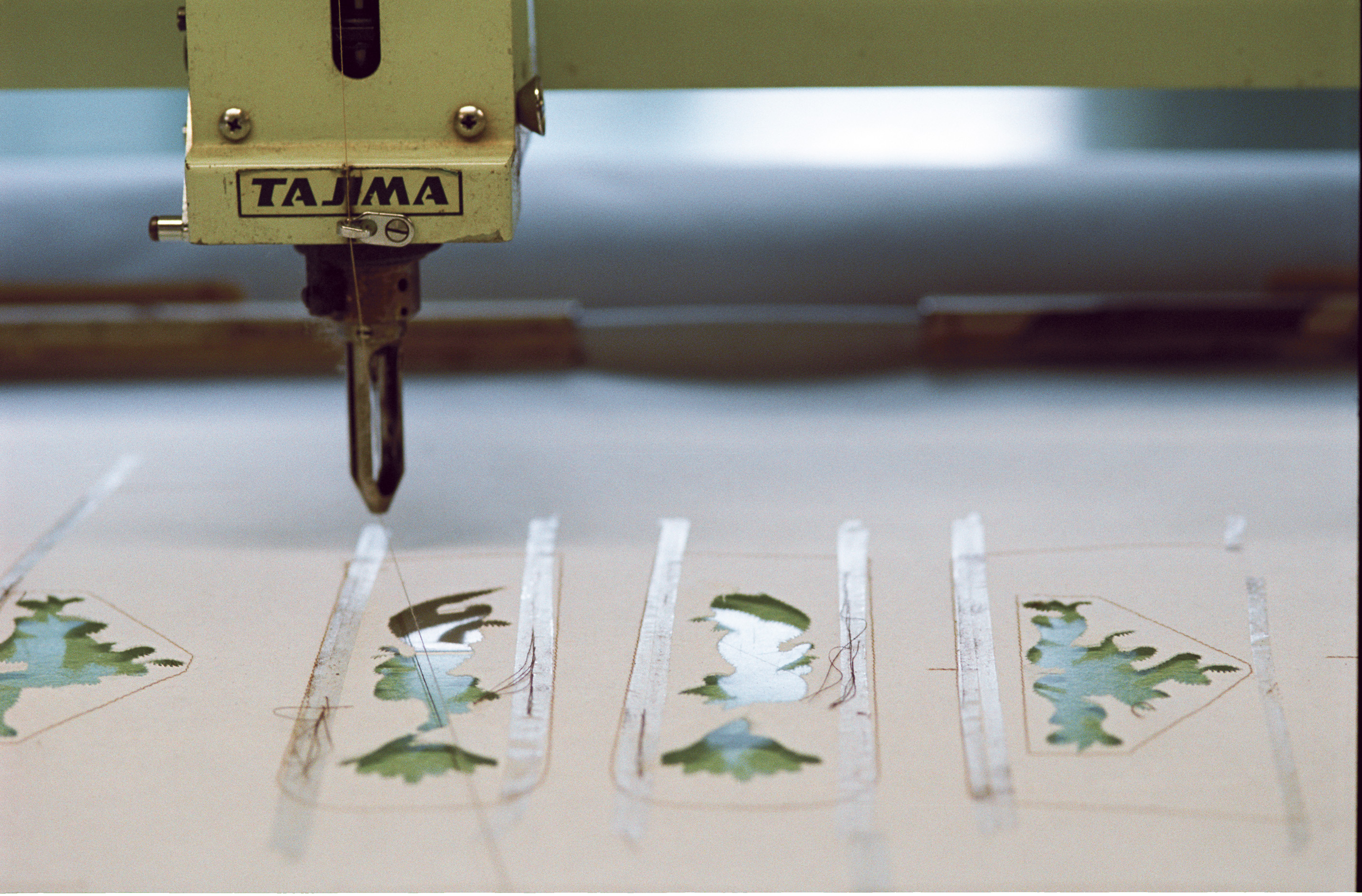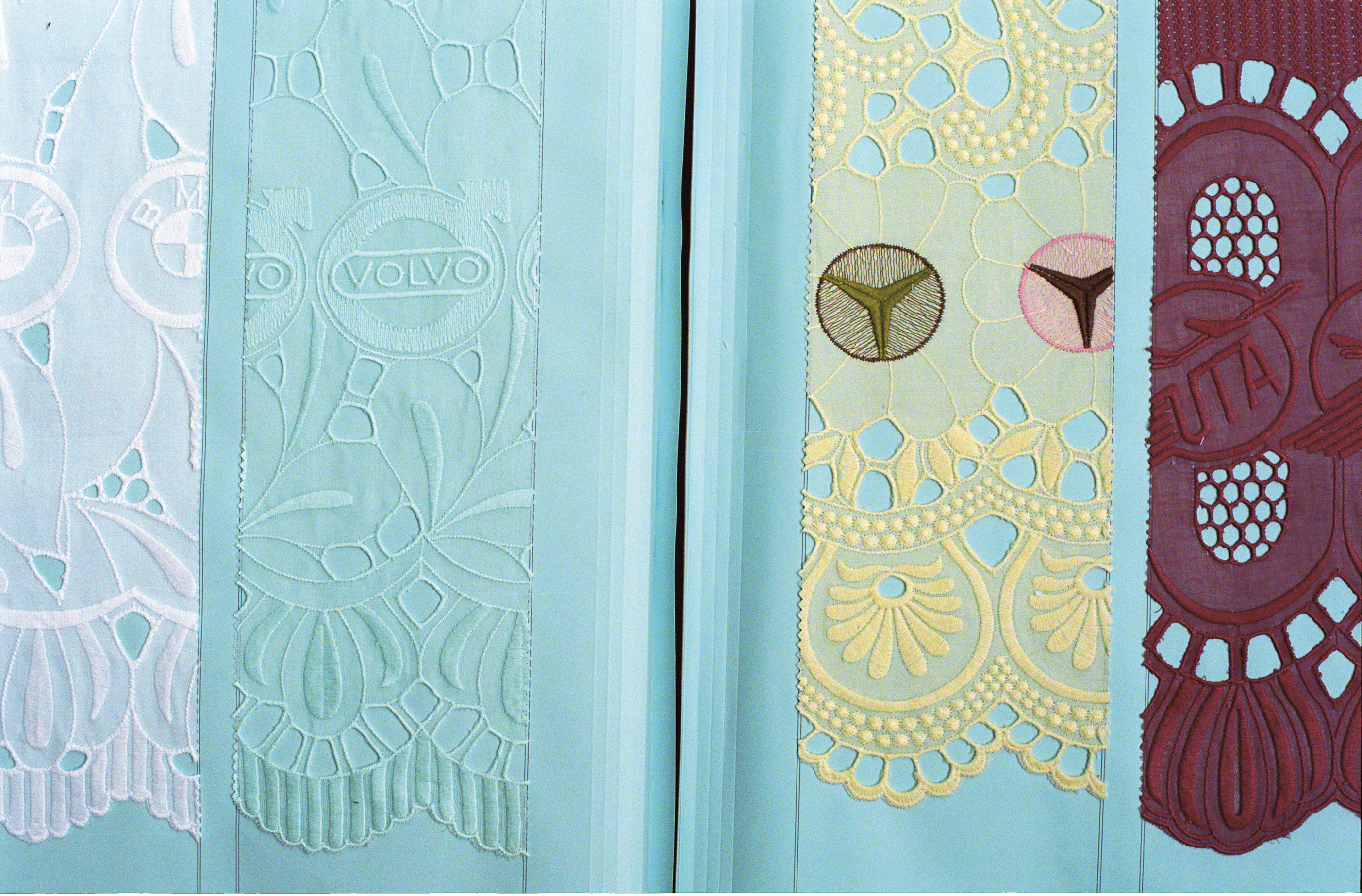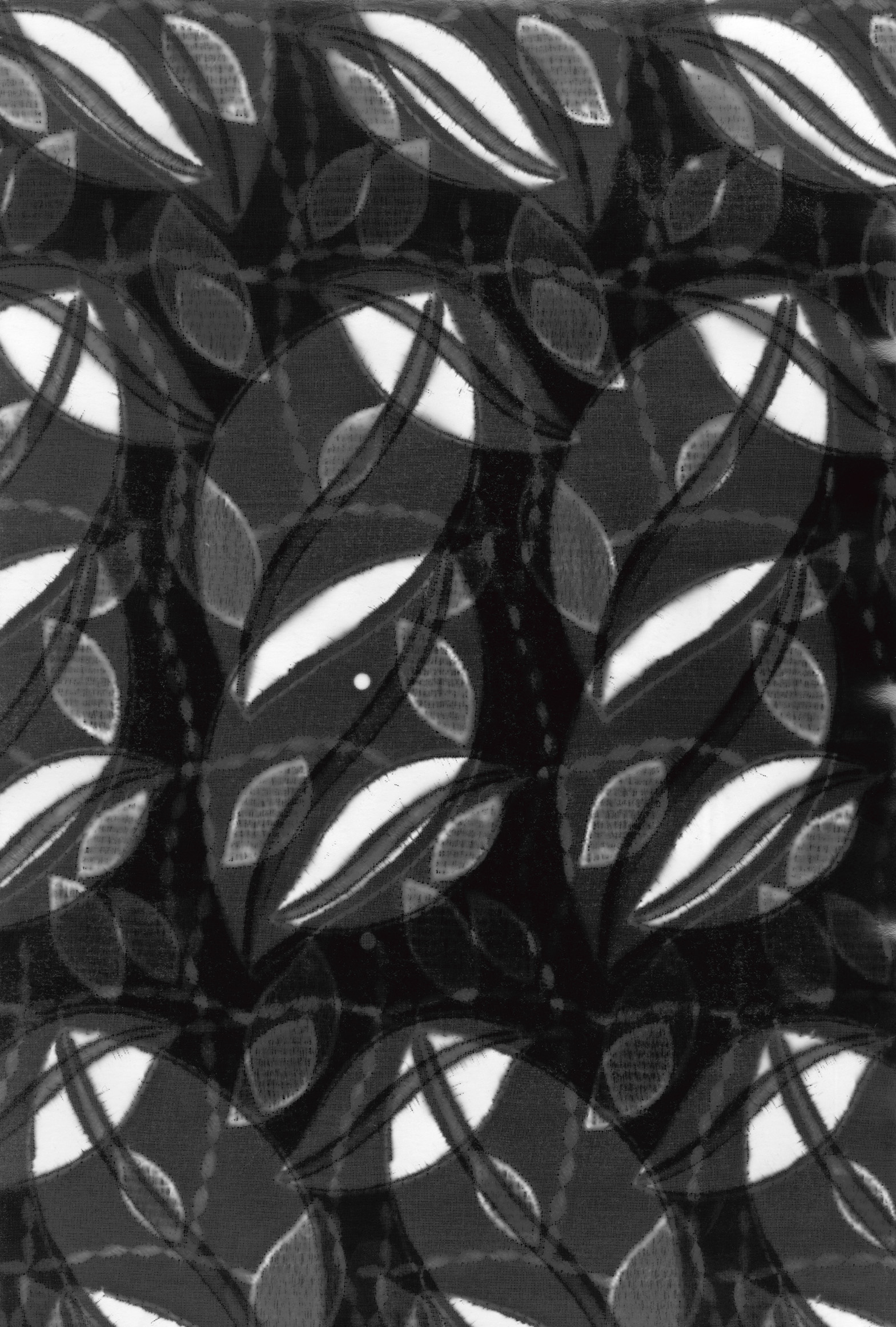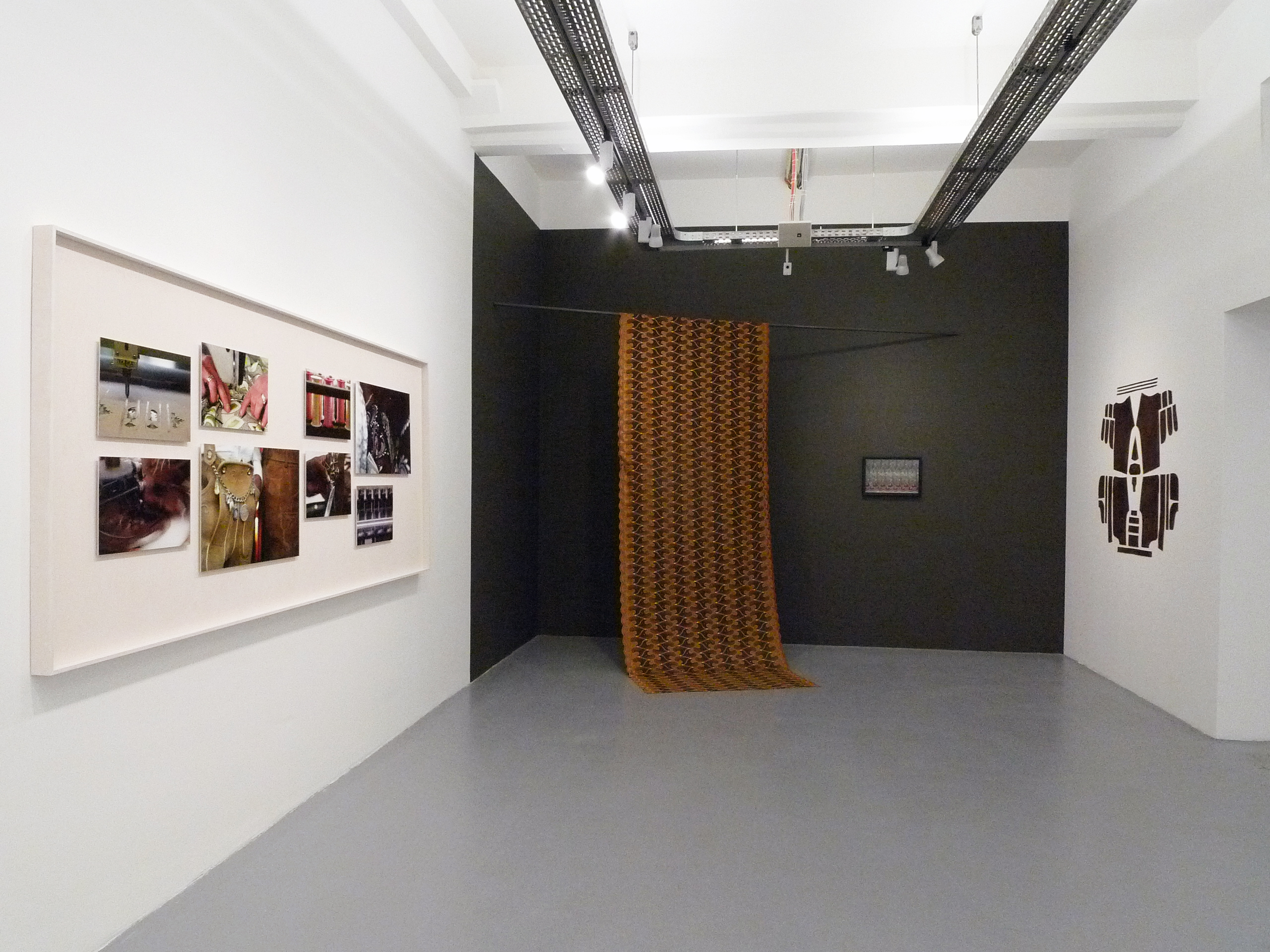
Installation with Photodisplay
fabric and Photograph
Ornament of a leather trousers
at Galerie Ostlicht, Vienna
Daily Production
2008
Series of about 36 Photographs, framed,
Chromogenic Print auf Fine Art Baryta
31,2 x
47 cm, 34 x 50 cm and 60 x 84 cm
2 HD-Videoloops from appr. 5 minutes
an Ornament out of leather trousers appr. 140 x 150 cm
fabric, bulk stock, embroidered
DAILY PRODUCTION
An Art Project by Sascha Reichstein
DAILY PRODUCTION looks at the relationship between tradition and renewal, and between cultural specifics and global economies. What is the status of specific cultural traditions and aesthetics today, how do they originate, what do they signify, and how are they transformed? Traditions always were and still are much more complex than our Western understanding generally portrays them, and in only very few cultures are they seen as static, unchanging, or unchangeable. Rather it was always the case that objects and phenomena from cultures near and far have been appropriated and transformed into something of one’s own – particularly in cultures with a colonial past.
DAILY PRODUCTION is concerned with the connections between tradition, production and work with reference to the design, manufacture and use of textiles. For a long time traditional dress was seen as an expression of a regional sense of belonging, an exemplary form of local cohesion and identification. There were several reasons for this. Firstly, the manufacture of textiles or the ways in which they were processed originally depended on traditional crafts and techniques that differed from region to region. Secondly, traditional clothes were made of locally available materials and cloth under local conditions. Thirdly, traditional forms and combinations of dress depended on social conventions that determined by whom, when and what was to be worn how. And finally the forms, colours and designs of traditional dress were the expression of aesthetic customs and norms that – to put it in traditional terms – manifested the Kunstwollen or style of a region and a period. What significance do these symbols and products have today, with their local provenance, their aesthetics, their production, and the ways in which they were put to daily use? DAILY PRODUCTION examines the aesthetics of traditional dress, which – notwithstanding all the regional differences – seems to be based everywhere in the world on comparable decoration, patterns and abstraction, and thus has frequently been linked to modern concepts of a universal formal idiom. The exhibition also addresses today’s internationalized production of traditional clothing by comparing its historical and contemporary functions. Traditional dress was originally handmade and developed within a clearly defined local area, but today it is subject to the same global conditions of production as fashion clothing. Leather shorts for the everyday consumer might today be made in India or Sri Lanka, while traditional African garments for the Nigerian market often with lavish ornamental embroidery are produced in the Vorarlberg region of Austria or in Switzerland.
The photographs and film fragments that are presented in DAILY PRODUCTION as a way of investigating this phenomenon are mainly close-ups. Work on materials and patterns is visualized by placing the abstract nature of the details at the centre of attention and allowing processes of manufacture to enter the picture in a fragmentary way. It is not immediately clear from which local context the images derive, where what is produced, and who the future wearers of these garments will be. This focuses the exhibition on the relationship between the local and the global, whether in terms of aesthetics, production, or the social significance of traditional dress.
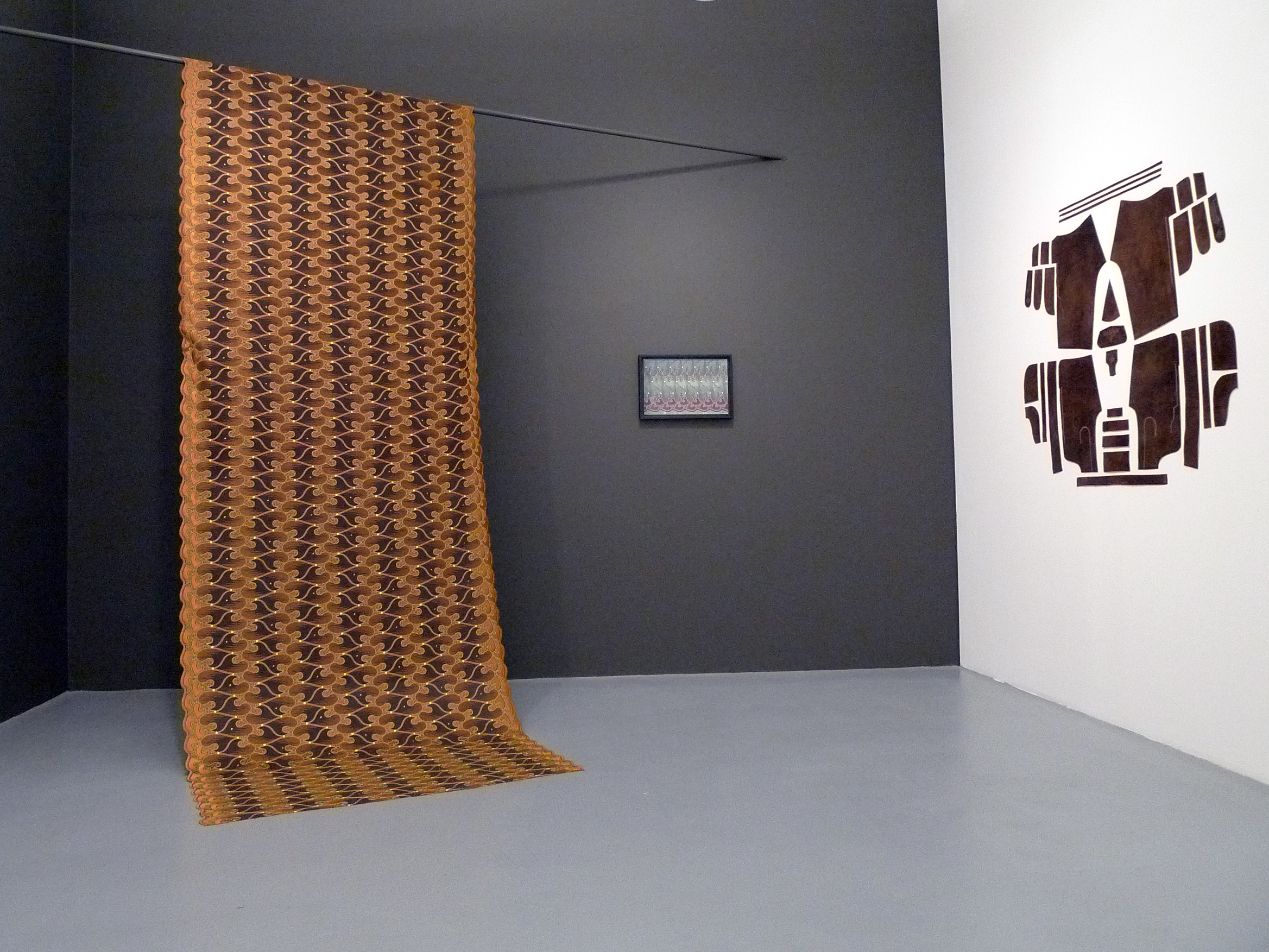
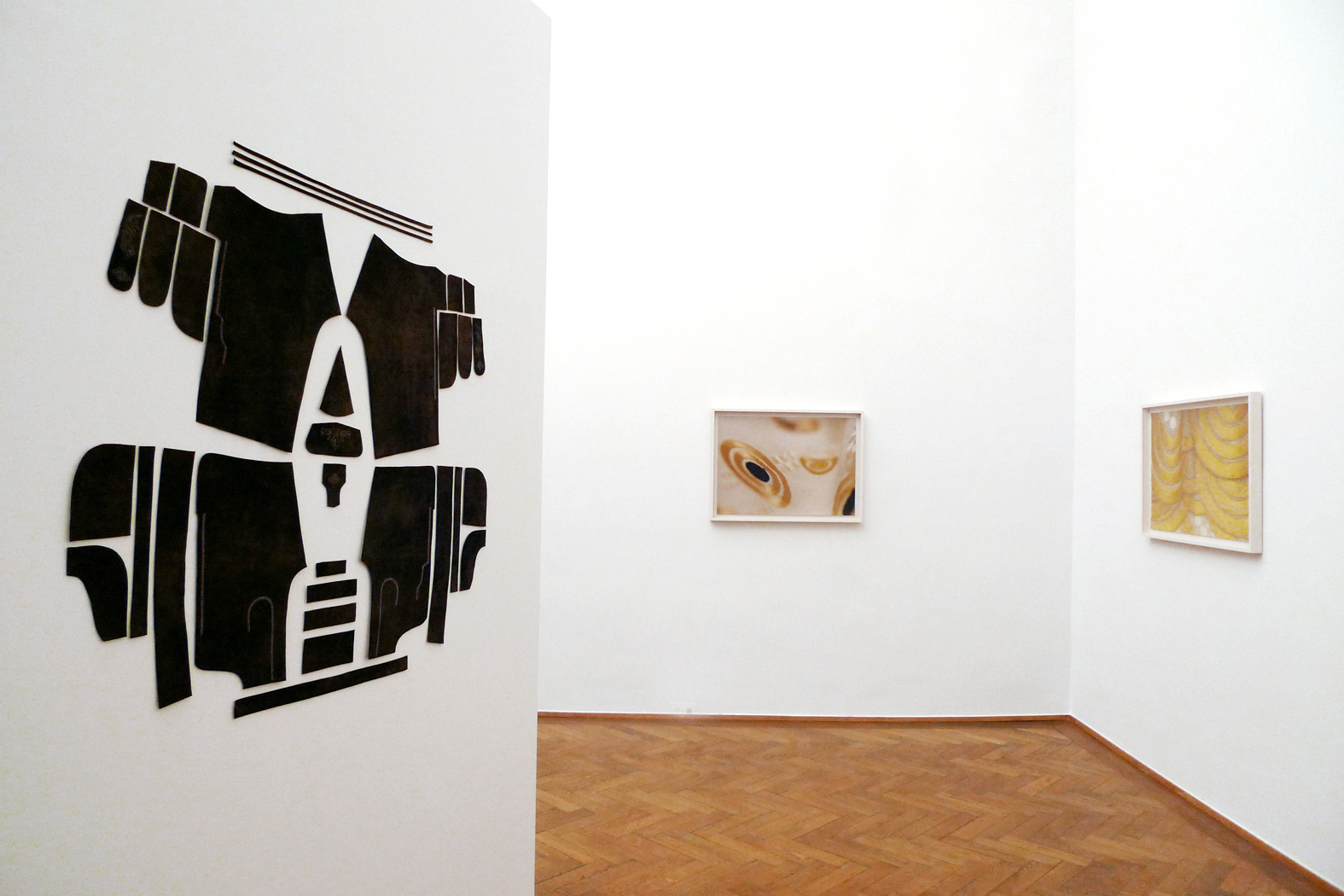
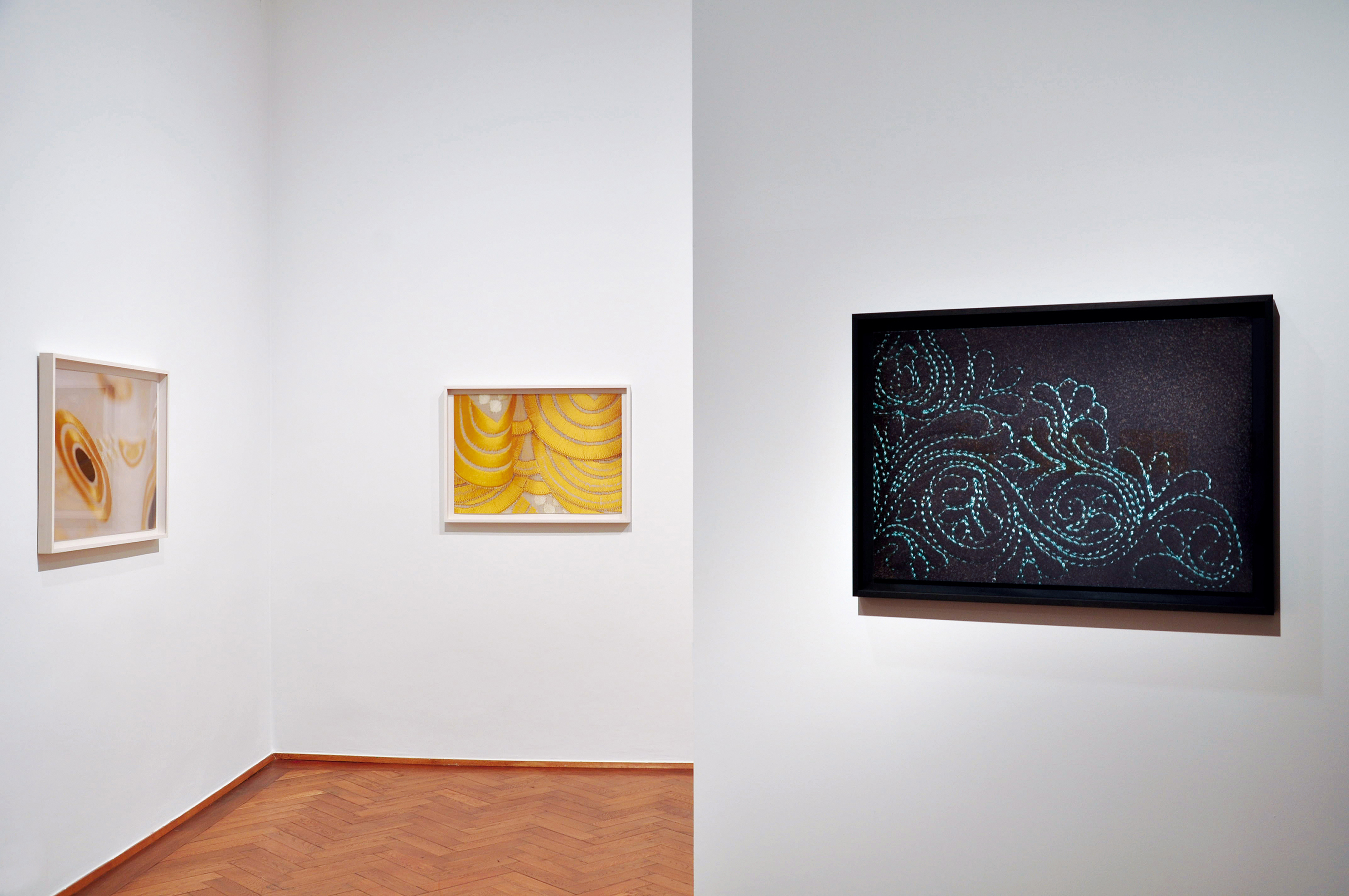
In the context of the Exhibition AFRICAN LACE,
Installation at Weltmuseum Wien
framed photographs, 60 x 84 cm
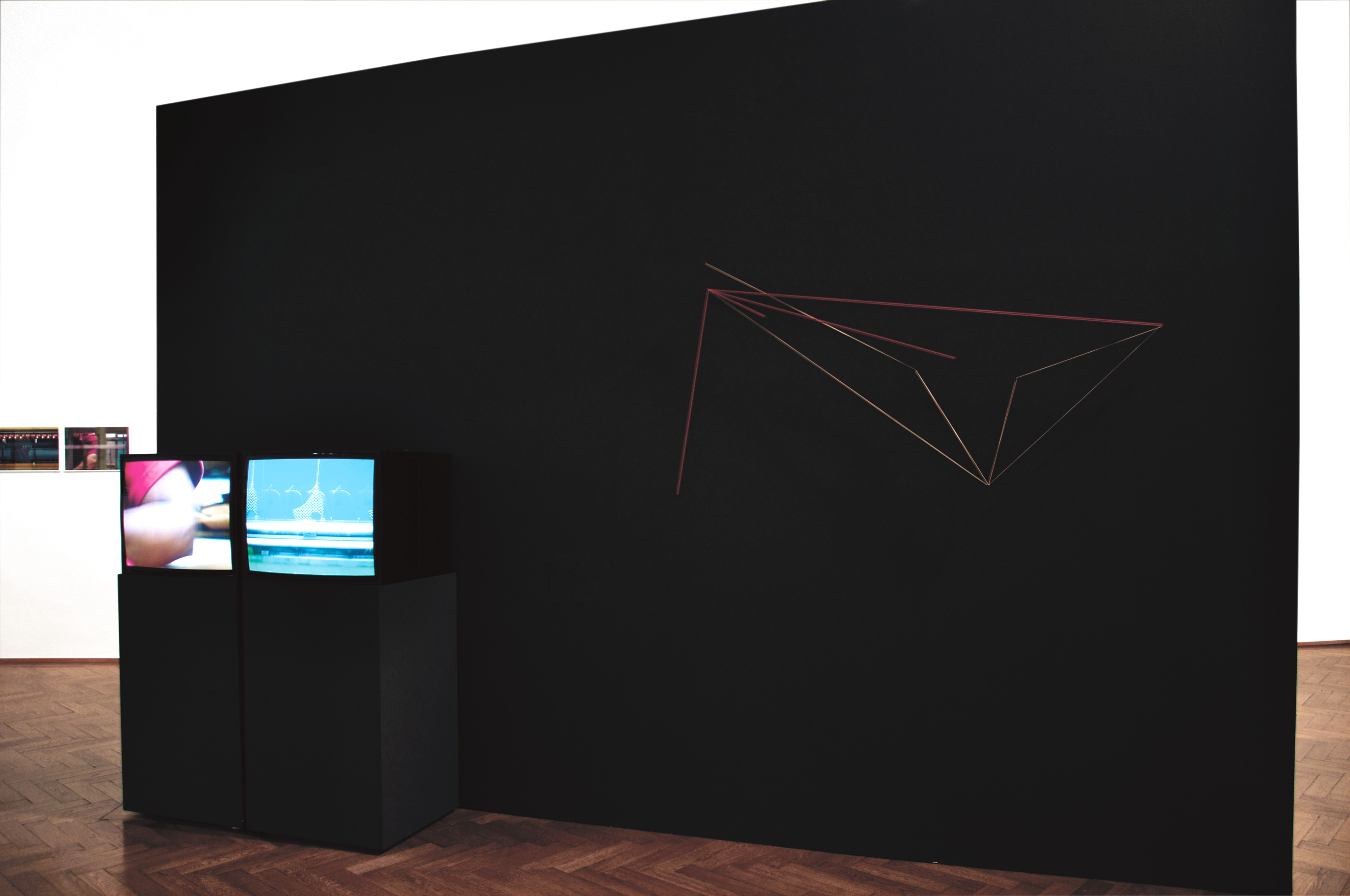
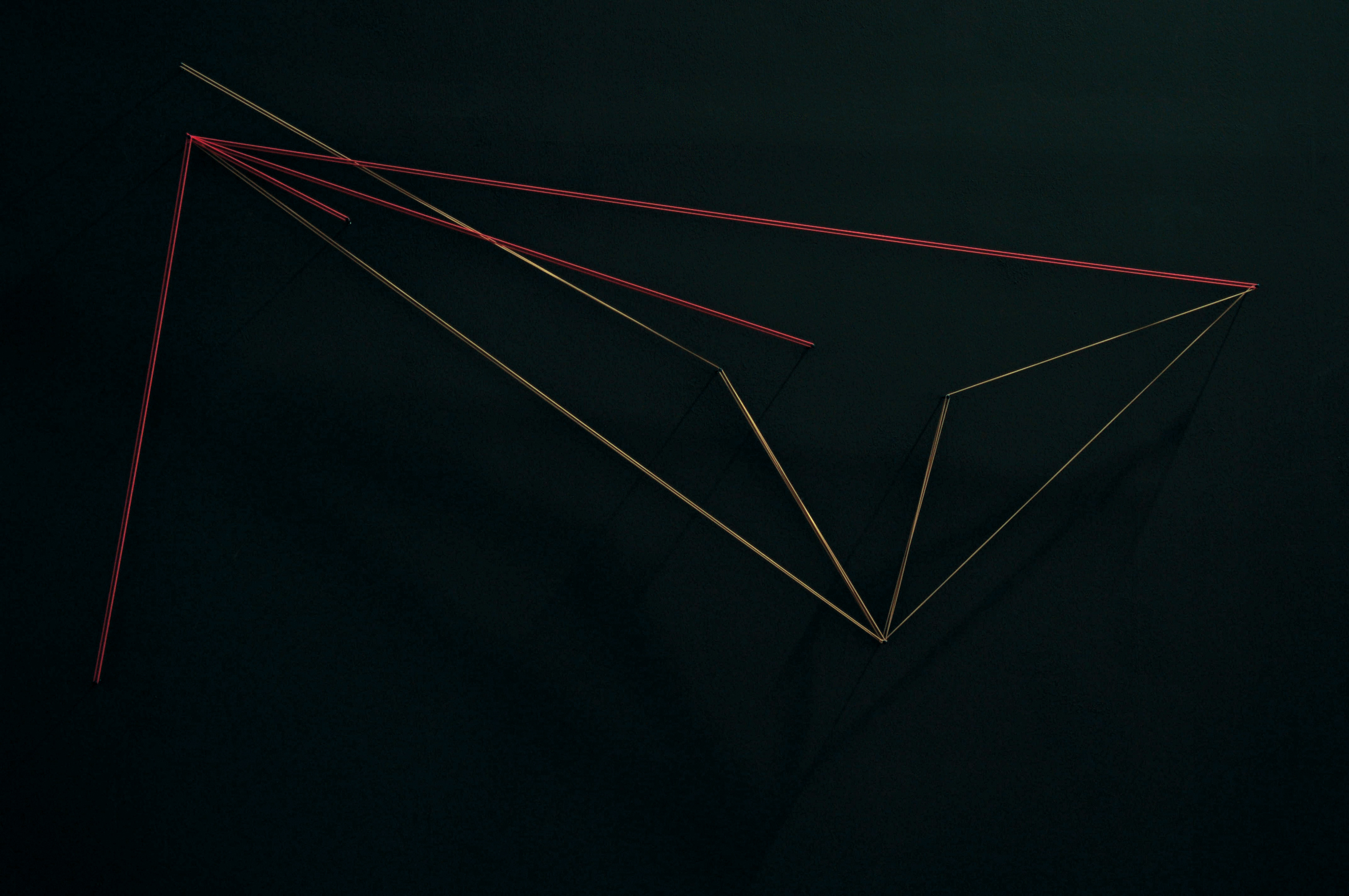
Thread Installation
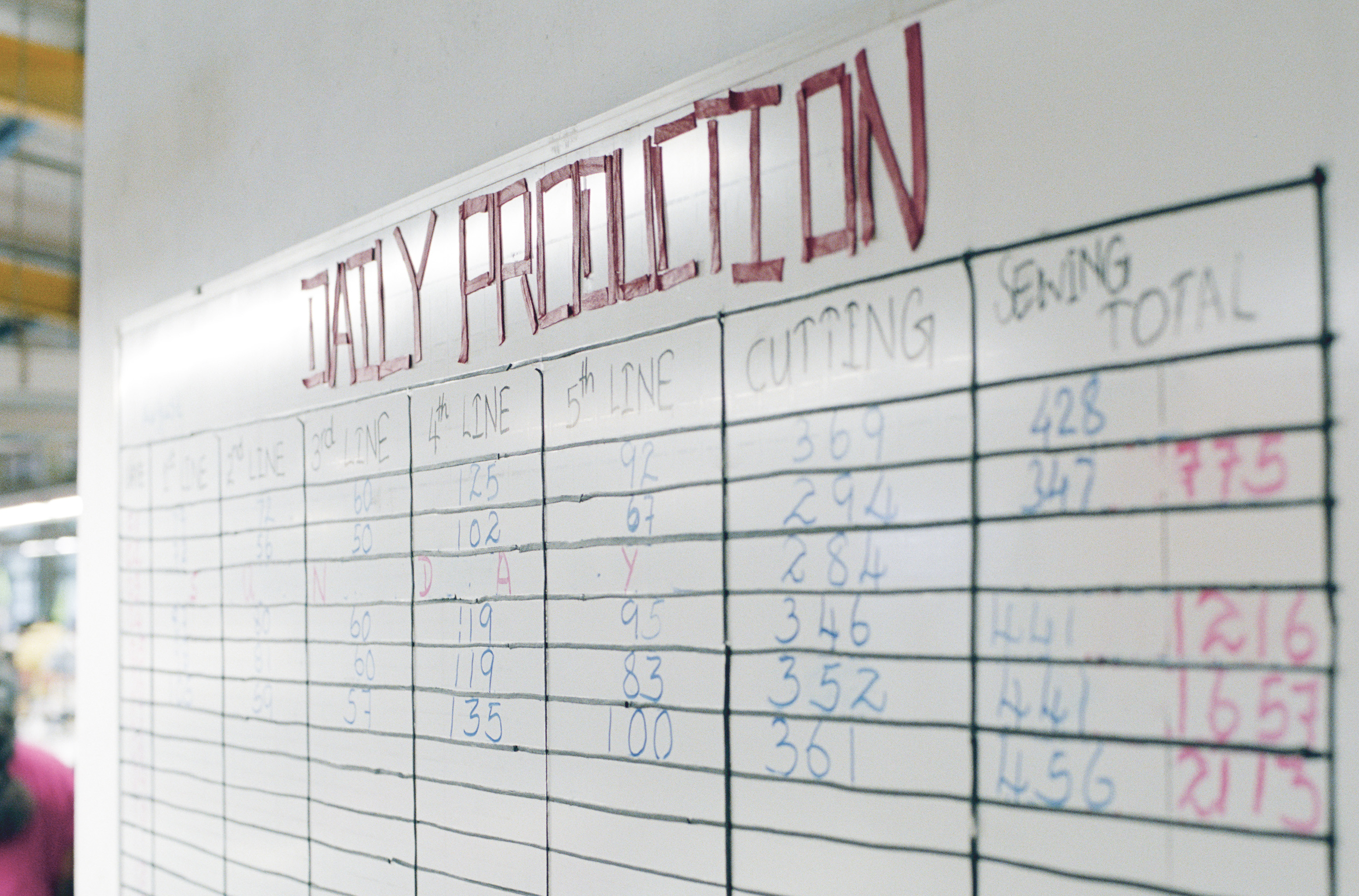
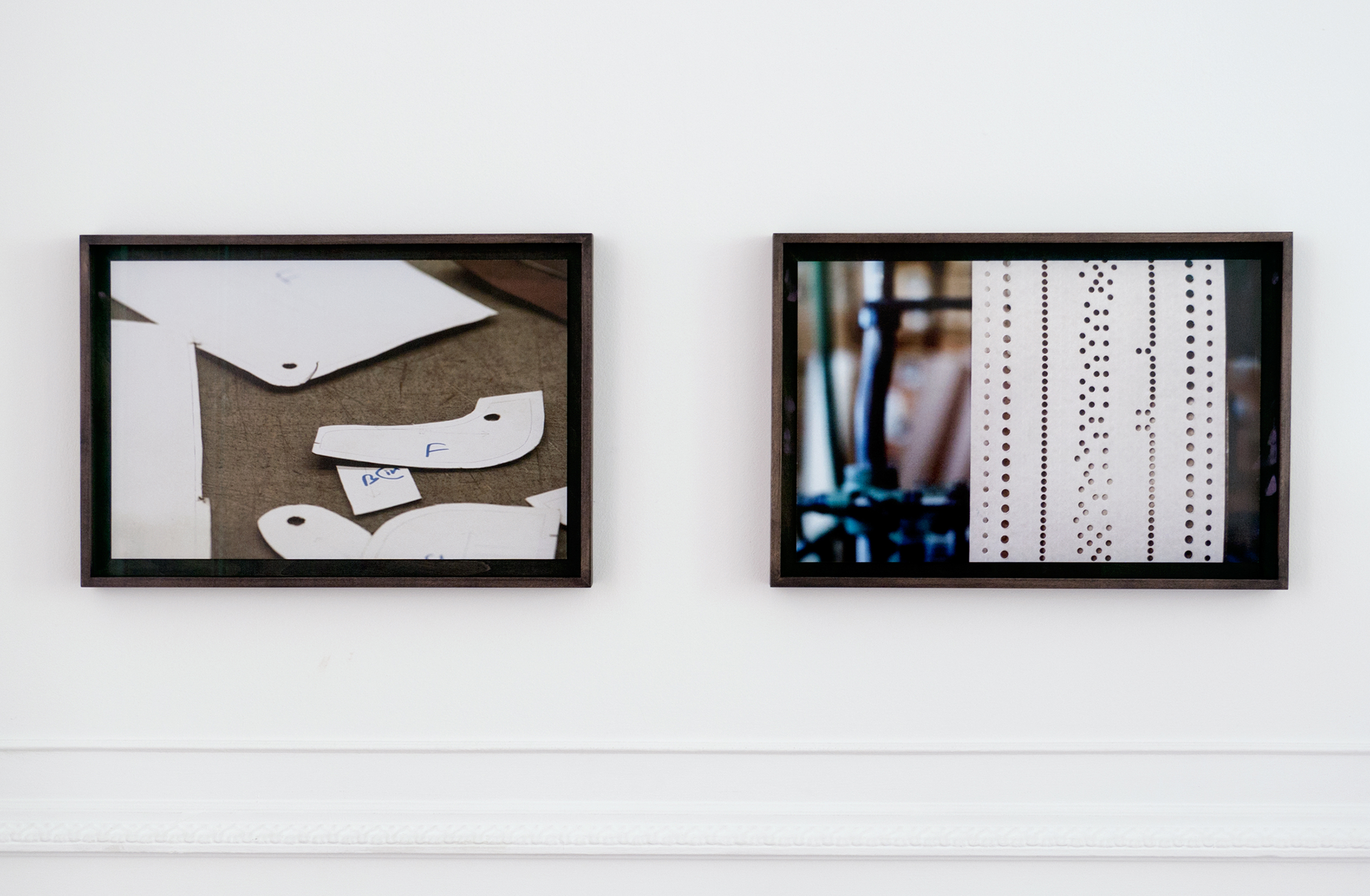
out of the series DAYLI PRODUCTION
framed, 31,2 x
47 cm
